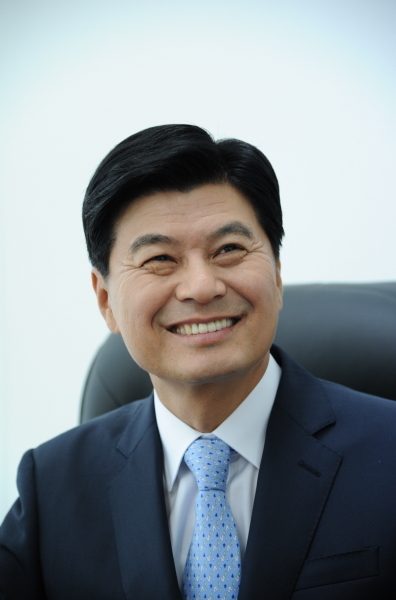[Weekender] Sejong: A city built in nature’s image
Former construction chief says the city was built to harmonize with ecosystem
By Yoon Min-sikPublished : Feb. 21, 2014 - 20:50
Cities and nature are often considered worlds apart.
The former is the epitome of man’s desire to conquer the latter, using concrete and steel to build a world unintended by Mother Earth.
Nonetheless, Lee Choon-hee ― an expert of urban planning and engineering ― said it is possible to construct cities that harmoniously exist with nature. The prime example, he says, is the recently-created administrative town of Sejong, in central Korea.
“There had been many new towns created (by the government), but all of them were built in a way that destroyed nature,” Lee, a former chief of the Multifunctional Administrative City Construction Agency that planned the city in the mid-2000s, told The Korea Herald.
“We felt the need to construct a nature-friendly city. This was the basic philosophy behind Sejong City,” he said. “If we could build a city in a way that mixed well with nature, the effect could be especially huge given that cities are the direct opposite of nature.”
The former is the epitome of man’s desire to conquer the latter, using concrete and steel to build a world unintended by Mother Earth.
Nonetheless, Lee Choon-hee ― an expert of urban planning and engineering ― said it is possible to construct cities that harmoniously exist with nature. The prime example, he says, is the recently-created administrative town of Sejong, in central Korea.
“There had been many new towns created (by the government), but all of them were built in a way that destroyed nature,” Lee, a former chief of the Multifunctional Administrative City Construction Agency that planned the city in the mid-2000s, told The Korea Herald.
“We felt the need to construct a nature-friendly city. This was the basic philosophy behind Sejong City,” he said. “If we could build a city in a way that mixed well with nature, the effect could be especially huge given that cities are the direct opposite of nature.”

With that in mind, Lee and his team searched for clues inside living organisms.
The first hint lay in the circulatory system of a living thing. Each body part carries out different functions, and they are packed together.
Sejong City took six main functions, including administration, international relations, research and high tech industry, and distributed them evenly in separate parts of the city.
“The important thing is circulation and communication (within the city),” he said. “You have to look at a city like it is a living organism. That way we can find ways to make it coexist with nature.”
In addition, Sejong is designed to minimize traffic volume, with high-tech public transportation systems expected to carry its citizens around. It also has over 350 kilometers of bicycle paths, which is expected to aid its goal of reducing car use to half the rate of other cities.
The city’s eco-friendly side is reflected in the use of renewable energy sources, which the city plans to use for 15 percent of its power use.
The coexistence also involves preservation of nature. Lee said less than half of the city was developed, with 52 percent of the land largely untouched.
This land can be used for farming, which would allow the city to construct a closed-loop ecological system, effectively becoming self-sustaining.
“In some aspects, we copied the nature’s circulatory system,” Lee said. “By going along with nature’s way, the city is in some aspects is imitating an ecosystem.”
Despite its goals, the infant city still needs to grow in order to take off. While the city’s construction has so far gone more or less according to plan, there is still the possibility that something may go wrong, causing the city to end up like its non-nature-friendly big brothers.
“The potential of Sejong City becoming the ideal 21st century city is very high. But to achieve that, all of us need to pool our wisdom,” Lee said.
By Yoon Min-sik (minsikyoon@heraldcorp.com)








![[KH Explains] Hyundai's full hybrid edge to pay off amid slow transition to pure EVs](http://res.heraldm.com/phpwas/restmb_idxmake.php?idx=644&simg=/content/image/2024/04/18/20240418050645_0.jpg&u=20240419100350)







![[From the Scene] Monks, Buddhists hail return of remains of Buddhas](http://res.heraldm.com/phpwas/restmb_idxmake.php?idx=652&simg=/content/image/2024/04/19/20240419050617_0.jpg&u=20240419175937)

![[KH Explains] Hyundai's full hybrid edge to pay off amid slow transition to pure EVs](http://res.heraldm.com/phpwas/restmb_idxmake.php?idx=652&simg=/content/image/2024/04/18/20240418050645_0.jpg&u=20240419100350)

![[Today’s K-pop] Illit drops debut single remix](http://res.heraldm.com/phpwas/restmb_idxmake.php?idx=642&simg=/content/image/2024/04/19/20240419050612_0.jpg&u=)